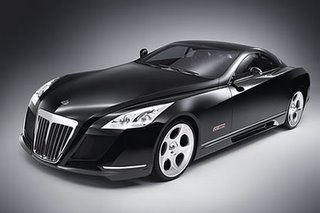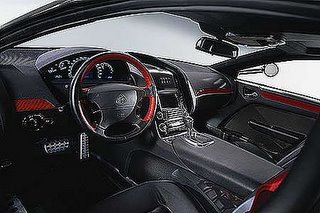 Are you one of those Benz fans who goes ga-ga over all of the tri-star's bells and whistles? As a former owner of a late-80's 560SEL with a reclining back seat, I was one of those people. When you shop for a car, is the ability to open the door without using the key high on your list of considerations? You may want to re-think that S-class purchase. Why? DaimlerChrysler brass issued an edict last year, directed at the engineers and suppliers behind the increasingly compex MB electronic systems. Did you know the Maybach has 77 electronic control units? When those units fail, you either lose your seat position, or your drive-by-wire brakes. Something to think about. Unfortunately, elecronic control systems are a fact of life for most of cars. At least DCX is doing something about it, by testing their systems as part of an integrated test unit, as well as individually. They are also forcing their suppliers to become certified, and joining other carmakers in adopting standards for the various vehicle control systems.
Are you one of those Benz fans who goes ga-ga over all of the tri-star's bells and whistles? As a former owner of a late-80's 560SEL with a reclining back seat, I was one of those people. When you shop for a car, is the ability to open the door without using the key high on your list of considerations? You may want to re-think that S-class purchase. Why? DaimlerChrysler brass issued an edict last year, directed at the engineers and suppliers behind the increasingly compex MB electronic systems. Did you know the Maybach has 77 electronic control units? When those units fail, you either lose your seat position, or your drive-by-wire brakes. Something to think about. Unfortunately, elecronic control systems are a fact of life for most of cars. At least DCX is doing something about it, by testing their systems as part of an integrated test unit, as well as individually. They are also forcing their suppliers to become certified, and joining other carmakers in adopting standards for the various vehicle control systems.What DCX seems to have forgotten is that one of the reasons MB cars fetch their ridiculous prices, in addition to paying for heritage, design, perceived safety, societal ranking, and teutonic genes, the buyers are paying for, and expecting, a growing cadre of gizmos and gadgets that make you go "wow!" Seat memory: check. Keyless/buttonless entry: check. HID lights: check. LCD speedometer that converts into rear-view/front radar view: check (see 2006 s-class). Anti-booming sunroof setting: not anymore.
The following is an excerpt from DaimlerChrysler's The Zero-Defect Initiative - Sounding Out Hardware and Software:
Increasingly faster chips that offer more memory capacity - and at lower costs -make it possible to equip existing electronic components with more and more functions. But new functions make testing more expensive and systems integration more difficult. What’s more, many users will find they can not operate a device that’s overloaded with all conceivable functionsuntil after they have pored through thick user manuals.
Wolfsried adopts a clear-cut position on this matter: “Functions that no one uses and that are of no use to anyone do not belong in the car.” He and his team found “bells and whistles” of this kind at the Mercedes-Benz Car Group as well. “That’s why we removed more than 600 functions from our cars.”
As examples, he cites an “anti-booming setting” on the sunroof for highway driving, or the storage of a driver’s individual seat position in the car key. “It was done with good intentions, but if I take my wife’s key at some point and can’t find my own seat position any more, that tends to be annoying for me instead of comfortable.”
So instead of investing money into better UI

(see Nokia, Apple, Audi, Frog Design, et al), the decision is to cut "more than 600 functions from our cars." Imagine paying $50,000 per year of MIT tuition, and finding that English classes have been eliminated to save money and to reduce the complexity of the admissions office database. So next time you are in the market for a new car, just remember who gives you all of your bells and whistles (Audi, BMW, Lexus), and who takes them away to cut corners.
Maybach Exelero Concept>

No comments:
Post a Comment